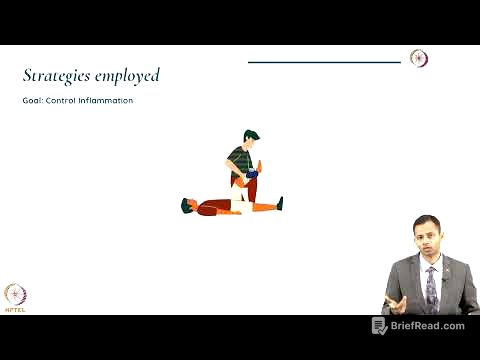TLDR;
This video by Chris Heria provides a comprehensive guide on how to achieve a handstand in five steps. It emphasises the importance of upper body strength, correct form, and balance. The steps include building upper body strength with pike holds and wall walks, mastering form with handstand kick-ups, practising balance with finger presses, and learning to dismount safely.
- Building upper body strength is the first step, using pike holds and wall walks.
- Mastering form involves hand placement and body alignment during handstand kick-ups.
- Balance is developed through handstand finger presses, teaching how to steer the body.
- The final step is learning to dismount, allowing for safe and controlled exits from the handstand.
Introduction [0:00]
Chris Heria introduces a tutorial on how to handstand in five steps, highlighting that mastering the handstand unlocks upper body strength, body control, and balance. These skills will allow you to progress to more advanced exercises like handstand push-ups. The three key components to mastering the handstand are upper body strength, form, and balance.
Building Upper Body Strength [0:16]
The first step to mastering a handstand is developing sufficient upper body strength. This can be achieved by starting with a pike hold, which involves walking from a push-up position until the body forms a straight line from hips to heels to hands. This position distributes body weight onto the shoulders, building strength and endurance. Progress to an elevated pike hold by placing feet on a higher surface, increasing the weight on the shoulders. Wall walks are then introduced, starting from a push-up position and walking feet up the wall in small steps, maintaining a straight body line. The goal is to walk up as high as possible, hold the position for at least 20 seconds, and complete three consecutive repetitions with perfect form.
Mastering the Correct Form [3:59]
The next step is mastering the correct form through handstand kick-ups. Starting in a push-up position, bring one leg up into a runner's start. The forward leg kicks off while the other leg swings up, maintaining a stacked body position. Fingertips should be spread wide for a firm grip, and the head should be slightly in front of the hands and shoulders. Look down at the floor to maintain alignment, forming a triangle between hand placement and gaze. Keep arms straight during the exercise to prevent the body from caving in. Lead with the hips, followed by the legs, to fall into the handstand position.
Practising Balance [5:41]
The third step involves practising balance using the handstand finger press. This exercise teaches how to steer in a handstand by pressing on the fingertips to control body movement. Pressing the fingertips hard enough will cause the feet to pry off the wall, bringing the body back down to the floor. Keep arms and legs straight, engage the core and glutes, and extend the body. The goal is to pry off the wall using only the fingertips while maintaining a perfect handstand position. Practise pressing with the fingertips as if pressing on a keyboard or grabbing a ball. Aim for 15 consecutive repetitions against the wall.
Handstand Finger Press and Release [7:38]
The handstand finger press and release teaches how to move forward in a handstand. Press into the fingertips until the feet pry off the wall, then release the pressure once the body is in a stacked handstand position. This causes the body to move back towards the wall. Holding a handstand involves a constant adjustment of pressing and releasing with the fingertips to maintain balance. Try to hold a handstand with feet slightly away from the wall, using fingertip pressure to stay balanced.
Perfect Form Tip [9:46]
To ensure proper form, be aware of hip position. When in a handstand against the wall, the body may naturally arch. To correct this, push the hips towards the wall to feel the correct alignment. This slight bend in the hips is what you should aim for when upside down.
Dismounting [11:10]
The final step is learning to dismount safely. This involves going into a handstand, finding the balance point, and then intentionally passing that point to come down. When ready to dismount, pass the invisible straight line balance point, allowing gravity to pull the body forward. Turn the hips to a comfortable side and separate the legs, placing one leg down first, followed by the other. Practise this to gain control and confidence in safely exiting the handstand.
Final Demonstration and Outro [13:10]
Chris Heria demonstrates a handstand hold with a dismount, summarising the five steps. He encourages viewers to visit Thenx.com for a step-by-step guide and the Heria Pro app for handstand workout routines. He also announces new apparel and music releases, inviting viewers to comment and follow for updates.









